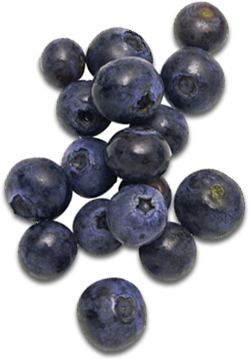no items to display
Fall Produce Highlight: 5 Fruits and Vegetables to Eat this Fall
Goodbye summer; hello fall! While summer’s sweet berries and ripe tomatoes may be coming to an end, the cooler weather and shorter days of fall don't have to mean the end of fresh fruits and vegetables. From September to November, the autumn harvest brings a variety of healthful and delicious fruits and vegetables, from apples and cranberries to broccoli and beets. So don’t wallow in sadness at the end of summer, celebrate the first day of fall with our favorite fall produce. Enjoy!
1. Apples: An apple a day may really keep the doctor away! Often called a "miracle food" and "nutritional powerhouse,” these sweet fall favorites are famous for their impressive list of phytonutrients and antioxidants. Among popular apple varieties (and there are more than 7,500 different types of them!), Fuji apples have the highest concentration of antioxidants, phenolics and flavonoids, which may help prevent chronic illness and aid in overall nutrition.
While applesauce and apple juice do contain some valuable vitamins and antioxidants, eating fruits and vegetables in their whole form will provide the greatest synergy of nutrients, the way nature intended. Try adding this crunchy fall fruit to your next salad or morning oatmeal; the possibilities are endless!
2. Cabbage: Packed with vitamins A and C, cabbage and its mini-me, Brussels sprouts, boast a high concentration of cancer-fighting glucosinolates, which also lend these veggies their distinct flavor. While cabbage may not be the sexiest vegetable around, it is very low in saturated fat and cholesterol and great for your waistline! Cabbage also has some surprising health benefits as well. Did you know cabbage helps dry oily and acne prone skin, relieve headache pain, reduce hangovers and improve your defense against Alzheimer’s and dementia? Not too shabby, right?
Try adding this fall vegetable to a mixed green salad with a spoonful of rice wine vinegar, a few drops of sesame oil, some toasted sesame seeds and a handful of edamame. Yum!
3. Beets: Beets may be available year-round, but they’re at their best in the fall. While beets have the highest sugar content of all vegetables, most people can safely eat beet roots a few times a week, enjoying not only their sweet, earthy flavor but also their powerhouse nutrients. If you’re looking to up your fall produce intake, beets are a good place to start. Beets are an excellent source of folate, providing 17% of daily recommended intake per serving, which helps support cell production, prevent osteoporosis-related bone fractures, and allows nerves to function properly. Plus beets are only 37 calories per serving!
Want a quick and easy way to eat beets? Try juicing them! For a zesty beetroot juice, combine beets, a whole lemon, a couple of apples, a chunk of gingerroot and a stalk of celery, or put together your own juicing recipe using your favorite fruits and vegetables. It doesn’t get much healthier (or easier) than that!
4. Cranberries: Cranberries are at their best October through November, though only 5 percent actually make it to the produce section (the other 95 percent are dried, canned, or turned into juice). As far as beneficial fruits and vegetables go, cranberries are at the top of the list due to their high nutrient and antioxidant content and are often referred to as a "super food." Not to mention, half a cup of cranberries contains only 25 calories! Research suggests cranberry concentrate can help prevent urinary tract infections and fresh cranberries can prevent oral diseases, decrease blood pressure and slow the growth of breast, colon, prostate, and lung cancers.
Enjoy the health benefits of this this tiny fall fruit by adding it to your favorite muffin recipe or whole grain cereal!
5. Broccoli: Broccoli, like many cruciferous vegetables, can be grown year-round in temperate climates so we've forgotten it even has a season. But, like the rest of its family, it tastes best when harvested in the cooler temperatures of fall. If you take just one piece of advice away from your childhood, make it this one: “Eat your broccoli!” Known for its cancer fighting properties, broccoli contains sulforaphane, which may help combat prostate, liver, lung, bladder, skin, and stomach cancer. Plus it’s rich in compounds that boost healthy tumor suppressors—and destroy ineffective ones. And, drumroll please…. It’s virtually fat-and sodium-free, and only weighs in at about 55 calories per cup!
Hungry? Thought so. Add this fall vegetable to your diet with these seasonal broccoli recipes, no mushy side dishes included.
What in-season produce are you looking forward to this fall? Let us know in the comments below!
Sources:
http://localfoods.about.com/od/whatsinseason/a/FallFruitVeg.htm
http://www.care2.com/greenliving/9-suprising-health-benefits-of-cabbage.html





